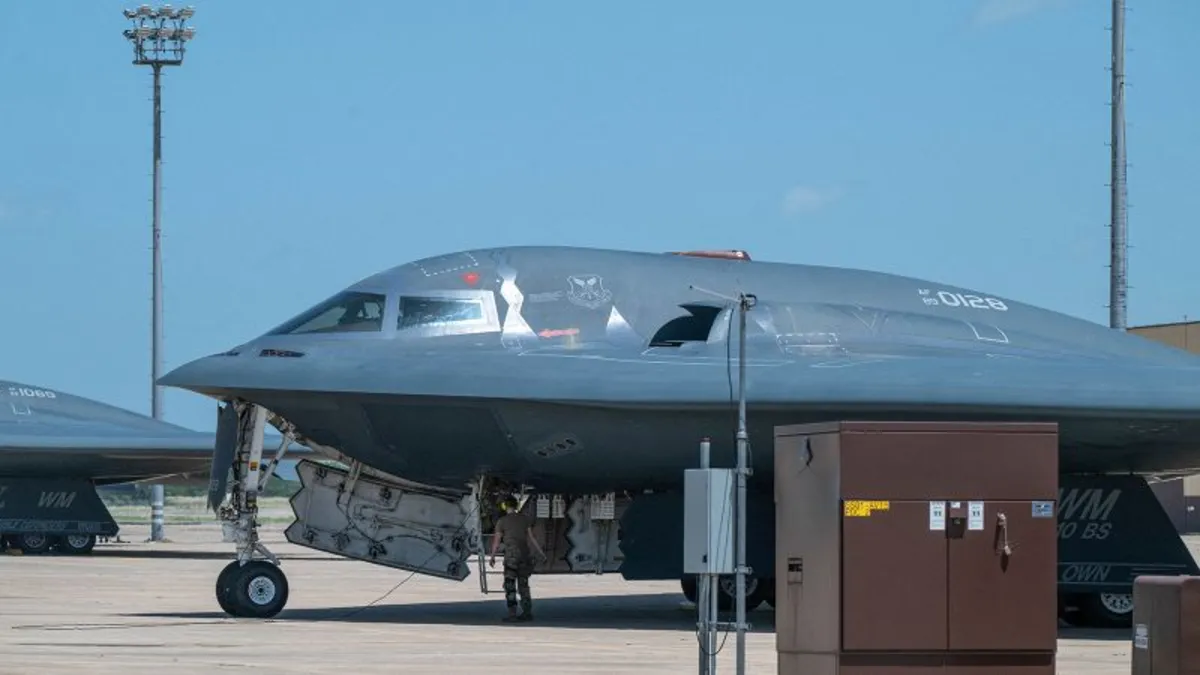
The recent US bombing mission that aimed at three nuclear facilities in Iran over the weekend stands out as a monumental operation, pushing the limits of human endurance as B-2 bomber pilots embarked on a remarkable 37-hour mission. A total of seven stealth bombers, each staffed by two crew members, flew non-stop halfway around the globe and back, marking one of the longest air raids in modern military history.
Among the few individuals who comprehend the challenges faced in the cockpit during such a grueling operation is Melvin G. Deaile, a retired Air Force colonel. He was part of the B-2 crew that executed a record-setting 44-hour bombing mission over Afghanistan in 2001. Deaile characterized Saturday’s operation as an “incredible feat,” highlighting the complexity and scale of the mission, which involved over 125 aircraft.
In addition to the seven bombers that departed from Whiteman Air Force Base in Missouri to execute strikes on Iran, the operation included other B-2s conducting feints and a variety of support aircraft, including fighter jets, reconnaissance planes, and refueling tankers strategically positioned along the bombers’ flight paths. “What was more historic than anything is the fact that we had seven jets over the target area, executing seven different bomb runs, all within the matter of 30 minutes,” Deaile noted.
Deaile’s historic mission coincided with the early days of Operation Enduring Freedom, initiated by then-President George W. Bush shortly after the 9/11 attacks to combat al-Qaeda and the Taliban. Long-range, high-altitude bombers like the B-2 were crucial for the initial strikes in Afghanistan. Before missions, pilots underwent training on long-duration simulators, but these typically lasted just 24 hours. Deaile's previous longest sortie was 25 hours.
Before the mission, bomber crews were selected without knowing the exact timing or nature of their operation. To assist with rest, flight doctors provided sleeping pills leading up to the bombings. “We just knew that if the president made the call, we were going to fly that second night,” Deaile explained.
On the day of his mission, Deaile, serving as the mission commander, awoke three to four hours prior to takeoff for briefings with his pilot and the crew of another B-2. They launched aboard the stealth bomber dubbed “Spirit of America.” During critical phases of flight, such as takeoff and landing, both crew members were required to be in their seats. In between these moments, they took turns resting on a modified cot placed behind the cockpit seats.
“The cot was not particularly comfortable, but it allowed for some much-needed rest,” Deaile recounted. However, falling asleep was challenging due to the inherent anxiety of combat missions. “Eventually, you’re going to get some shut-eye, just because your body requires it,” he added. The presence of sunlight during their westward flight aided in keeping fatigue at bay.
As the mission progressed, both crew members relied on chemical aids to maintain alertness. “The flight doc had what we call ‘go pills’ authorized for use — amphetamines,” Deaile stated, though he noted that policies may have evolved since his time. The B-2, manufactured by Northrop Grumman, is not only one of the most advanced bombers but also comes with its own set of logistical challenges, including a primitive toilet facility.
Despite the difficulties, such as a lack of privacy and limited bathroom access, hydration remained a priority. Deaile estimated that he and his co-pilot consumed about a bottle of water per hour, using “piddle packs” for urination, a necessity during their lengthy flight. “These are the things you do when you have 44 hours, right?” he joked.
Throughout the mission, the crew flew over the Pacific Ocean, south of India, and then north toward Afghanistan. They executed multiple mid-air refuelings to sustain their journey. Upon nightfall, Deaile took one of the amphetamines to help stay alert as they prepared to drop their payload over Afghanistan, spending approximately four hours in the airspace before receiving orders for an additional bomb run.
After completing their mission, they landed at Diego Garcia, a military base situated about 1,100 miles southwest of India, where they underwent a debriefing, viewed video footage of their targets, and finally took time to decompress before resting.
Steven Basham, a retired Air Force lieutenant general who flew B-2s during their first combat use in 1999, reflected on the surreal nature of the mission. “Taking off was probably the most surreal moment in the lives of the crews,” he said, emphasizing the secrecy surrounding their operation. Notably, this mission marked the first combat use of the 30,000-pound GBU-57 Massive Ordnance Penetrator bombs, specifically designed to penetrate fortified targets associated with Iran's nuclear program.
With seven bombers carrying over a dozen of these advanced munitions, the mission showcased the capabilities of the B-2 bomber. Basham noted that while the impact of releasing several tons of weight would likely be minimal for such a sophisticated aircraft, the return journey to Missouri posed significant challenges for the fatigued crew. However, the anticipation of a “welcome home” from US air traffic controllers would undoubtedly boost their spirits.
This recent mission not only demonstrates the operational capabilities of the B-2 but also highlights the complexities and human endurance required for long-duration military missions.